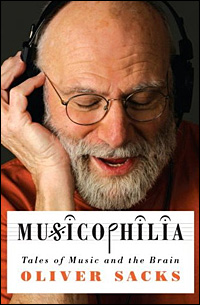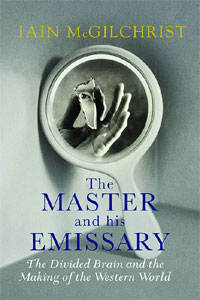
Oliver Wolf Sacks, was a British neurologist, naturalist, historian of science, and writer. Born in Britain, Sacks received his medical degree from The Queen's College, Oxford in 1960, before moving to the United States, where he spent most of his career. He then interned at Mount Zion Hospital in San Francisco and completed his residency in neurology and neuropathology at the University of California, Los Angeles (UCLA). After a fellowship at the Albert Einstein College of Medicine, he served as neurologist at Beth Abraham Hospital's chronic-care facility in the Bronx, where he worked with a group of survivors of the 1920s sleeping sickness encephalitis lethargica, who had been unable to move on their own for decades. His treatment of those patients became the basis of his 1973 book Awakenings, which was adapted into an Academy Award-nominated film in 1990, starring Robin Williams and Robert De Niro.

Stereoscopy is a technique for creating or enhancing the illusion of depth in an image by means of stereopsis for binocular vision. The word stereoscopy derives from Greek στερεός (stereos) 'firm, solid', and σκοπέω (skopeō) 'to look, to see'. Any stereoscopic image is called a stereogram. Originally, stereogram referred to a pair of stereo images which could be viewed using a stereoscope.

Howard Engel CM was a Canadian mystery author and CBC producer who resided in Toronto, Ontario. He was famous for his Benny Cooperman detective series, set in the Niagara Region in and around the city of Grantham, Ontario, mirroring St. Catharines, Ontario, where he was born. He was one of the founding authors of Crime Writers Of Canada in 1982.

The Man Who Mistook His Wife for a Hat and Other Clinical Tales is a 1985 book by neurologist Oliver Sacks describing the case histories of some of his patients. Sacks chose the title of the book from the case study of one of his patients who has visual agnosia, a neurological condition that leaves him unable to recognize faces and objects. The book became the basis of an opera of the same name by Michael Nyman, which premiered in 1986.

Encephalitis lethargica is an atypical form of encephalitis. Also known as "sleeping sickness" or "sleepy sickness", it was first described in 1917 by the neurologist Constantin von Economo and the pathologist Jean-René Cruchet. The disease attacks the brain, leaving some victims in a statue-like condition, speechless and motionless. Between 1915 and 1926, an epidemic of encephalitis lethargica spread around the world. The exact number of people infected is unknown, but it is estimated that more than one million people contracted the disease during the epidemic, which directly caused more than 500,000 deaths. Most of those who survived never returned to their pre-morbid vigour. In the words of the famed neurologist and writer Oliver Sacks:
They would be conscious and aware – yet not fully awake; they would sit motionless and speechless all day in their chairs, totally lacking energy, impetus, initiative, motive, appetite, affect or desire; they registered what went on about them without active attention, and with profound indifference. They neither conveyed nor felt the feeling of life; they were as insubstantial as ghosts, and as passive as zombies.

A stereoscope is a device for viewing a stereoscopic pair of separate images, depicting left-eye and right-eye views of the same scene, as a single three-dimensional image.

A scotoma is an area of partial alteration in the field of vision consisting of a partially diminished or entirely degenerated visual acuity that is surrounded by a field of normal – or relatively well-preserved – vision.
Stereopsis is a term that is most often used to refer to the perception of depth and three-dimensional structure obtained on the basis of visual information deriving from two eyes by individuals with normally developed binocular vision. Because the eyes of humans, and many animals, are located at different lateral positions on the head, binocular vision results in two slightly different images projected to the retinas of the eyes. The differences are mainly in the relative horizontal position of objects in the two images. These positional differences are referred to as "horizontal disparities" or, more generally, "binocular disparities". Disparities are processed in the visual cortex of the brain to yield depth perception. While binocular disparities are naturally present when viewing a real three-dimensional scene with two eyes, they can also be simulated by artificially presenting two different images separately to each eye using a method called stereoscopy. The perception of depth in such cases is also referred to as "stereoscopic depth".

An Anthropologist on Mars: Seven Paradoxical Tales is a 1995 book by neurologist Oliver Sacks consisting of seven medical case histories of individuals with neurological conditions such as autism and Tourette syndrome. An Anthropologist on Mars follows up on many of the themes Sacks explored in his 1985 book, The Man Who Mistook His Wife for a Hat, but here the essays are significantly longer and Sacks has more of an opportunity to discuss each subject with more depth and to explore historical case studies of patients with similar symptoms. In addition, Sacks studies his patients outside the hospital, often traveling considerable distances to interact with his subjects in their own environments. Sacks concludes that "defects, disorders, [and] diseases... can play a paradoxical role, by bringing out latent powers, developments, evolutions, forms of life that might never be seen, or even be imaginable, in their absence".

Cerebral achromatopsia is a type of color-blindness caused by damage to the cerebral cortex of the brain, rather than abnormalities in the cells of the eye's retina. It is often confused with congenital achromatopsia but underlying physiological deficits of the disorders are completely distinct. A similar, but distinct, deficit called color agnosia exists in which a person has intact color perception but has deficits in color recognition, such as knowing which color they are looking at.
Stereoblindness is the inability to see in 3D using stereopsis, or stereo vision, resulting in an inability to perceive stereoscopic depth by combining and comparing images from the two eyes.

In 2007 neurologist Oliver Sacks released his book Musicophilia: Tales of Music and the Brain in which he explores a range of psychological and physiological ailments and their intriguing connections to music. It is broken down into four parts, each with a distinctive theme; part one titled Haunted by Music examines mysterious onsets of musicality and musicophilia. Part two A Range of Musicality looks at musical oddities musical synesthesia. Parts three and four are titled Memory, Movement, and Music and Emotions, Identity, and Music respectively. Each part has between six and eight chapters, each of which is in turn dedicated to a particular case study that fit the overarching theme of the section. Presenting the book in this fashion makes the reading a little disjointed if one is doing so cover to cover, however, it also means one may pick up the book and flip to any chapter for a quick read without losing any context. Four case studies from the book are featured in the NOVA program Musical Minds aired on June 30, 2009.
Anton syndrome, also known as Anton's blindness and visual anosognosia, is a rare symptom of brain damage occurring in the occipital lobe. Those who have it are cortically blind, but affirm, often quite adamantly and in the face of clear evidence of their blindness, that they are capable of seeing. Failing to accept being blind, people with Anton syndrome dismiss evidence of their condition and employ confabulation to fill in the missing sensory input. It is named after the neurologist Gabriel Anton. Only 28 cases have been published.

The Master and His Emissary: The Divided Brain and the Making of the Western World is a 2009 book written by psychiatrist Iain McGilchrist that deals with the specialist hemispheric functioning of the brain. The differing world views of the right and left brain have, according to the author, shaped Western culture since the time of the ancient Greek philosopher Plato, and the growing conflict between these views has implications for the way the modern world is changing. In part, McGilchrist's book, which is the product of twenty years of research, reviews the evidence of previous related research and theories, and based on this and cultural evidence, the author arrives at his own conclusions.
Norman Doidge,, is a psychiatrist, psychoanalyst, and author of The Brain that Changes Itself and The Brain's Way of Healing.
Susan R. Barry is a professor of neurobiology at Mount Holyoke College and the author of Fixing My Gaze: A Scientist's Journey into Seeing in Three Dimensions. Barry was dubbed Stereo Sue by neurologist and author Oliver Sacks in a 2006 New Yorker article with that name. Barry's book greatly expands on Sacks' article and discusses the experience of gaining stereovision through optometric vision therapy, after a lifetime of being stereoblind. It challenges the conventional wisdom that the brain is wired for perceptual skills during a critical period in early childhood and provides evidence instead for neuronal plasticity throughout life. Barry's achievement of stereo vision, with the help of a developmental optometrist Theresa Ruggiero, was reported in a BBC Imagine documentary broadcast on June 28, 2011.
Stereoscopic acuity, also stereoacuity, is the smallest detectable depth difference that can be seen in binocular vision.

Stereopsis recovery, also recovery from stereoblindness, is the phenomenon of a stereoblind person gaining partial or full ability of stereo vision (stereopsis).

A stereoscopic video game is a video game which uses stereoscopic technologies to create depth perception for the player by any form of stereo display. Such games should not to be confused with video games that use 3D game graphics on a mono screen, which give the illusion of depth only by monocular cues but not by binocular depth information.
Stereoscopic motion, as introduced by Béla Julesz in his book Foundations of Cyclopean Perception of 1971, is a translational motion of figure boundaries defined by changes in binocular disparity over time in a real-life 3D scene, a 3D film or other stereoscopic scene. This translational motion gives rise to a mental representation of three dimensional motion created in the brain on the basis of the binocular motion stimuli. Whereas the motion stimuli as presented to the eyes have a different direction for each eye, the stereoscopic motion is perceived as yet another direction on the basis of the views of both eyes taken together. Stereoscopic motion, as it is perceived by the brain, is also referred to as cyclopean motion, and the processing of visual input that takes place in the visual system relating to stereoscopic motion is called stereoscopic motion processing.












